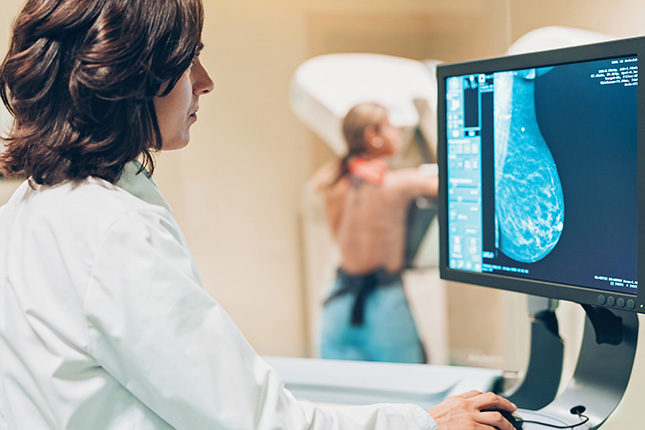Dense Breast Notification After Mammography

When you get the results of your mammogram, you may also be told if your breasts have low or high density.
In the 2015 National Health Interview Survey, 1 in 4 women who received a mammogram for breast cancer screening reported they had been informed that their mammogram showed dense breast tissue. This is half of what would be expected.
What Does It Mean to Have Dense Breasts?
Radiologists use the term breast density to describe the amount of fibrous and glandular tissue in a woman’s breasts compared with the amount of fatty tissue in the breasts, as seen on a mammogram. Fibrous and glandular tissue appears white (radiopaque) on a mammogram. So does a possible tumor. Because it’s hard to tell the difference between a tumor and dense breast tissue on a mammogram, a small tumor may be missed. Dense breast tissue also is a risk factor for breast cancer.
How the Study Was Done
CDC used data from the 2015 National Health Interview Survey to learn how often women were told they had dense breasts when they receive their mammogram results. The study included responses from women aged 35 to 74 years who had not had breast cancer and who received a routine screening mammogram within the past 2 years.
Women were asked if they had been notified that their mammogram showed dense breast tissue. Women also were asked if they had been advised to have more tests such as an ultrasound, breast magnetic resonance imaging (MRI), or biopsy after their most recent mammogram.
What the Study Found
- Overall, 25% of women reported that they had been informed that their mammogram showed dense breast tissue.
- Women were less likely to report they had been informed that their mammogram showed dense breast tissue if they were older than 55, were Black or Hispanic, had not had a mammogram in the past year, were born outside the United States, were not a college graduate, or had income less than 250% of the federal poverty threshold.
- Women were more likely to report they had been informed that their mammogram showed dense breast tissue if they lived in the Northeast or had a first-degree family history of breast cancer.
- Of the group of women who reported dense breast tissue notification, 26% reported additional tests following mammography, with ultrasound (15%) being the most common additional test.
What This Means
In 2015, 1 in 4 women in all states said they had been told they have dense breast tissue after a recent mammogram. This is half of what would be expected if notifications had been required nationwide in 2015. From 2009 to 2019, 36 states made laws to require women to be notified if their mammogram showed they had dense breast tissue.
Important questions for clinicians, patient education, and research include how to best communicate information about dense breast tissue to women, and what are the appropriate additional tests.
Citation
Richards TB, Dasari S, Sabatino SA, Qin J, Miller JW, White MC. Women’s reports of dense breast notification following mammography: findings from the 2015 National Health Interview Survey.external icon Journal of General Internal Medicine 2020;35(7):2207–2209.